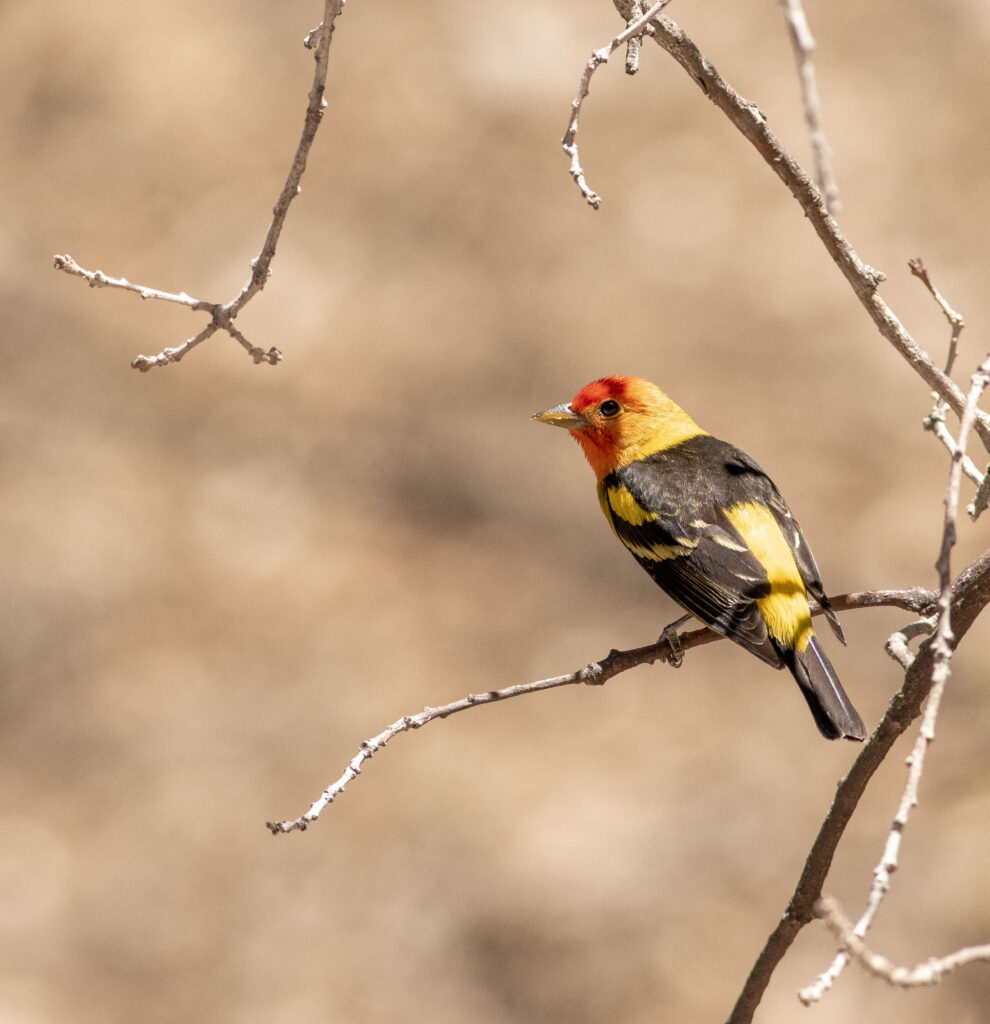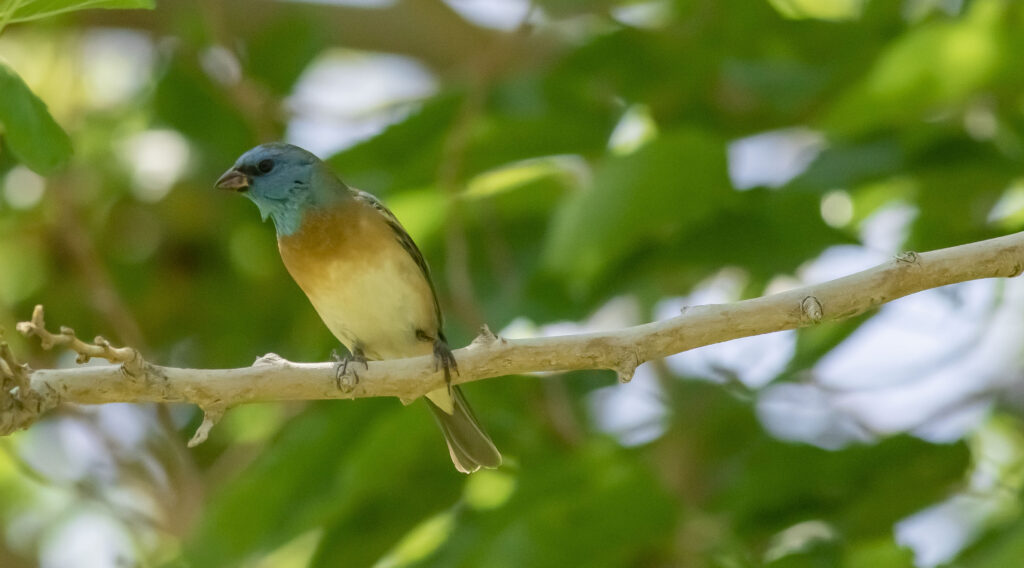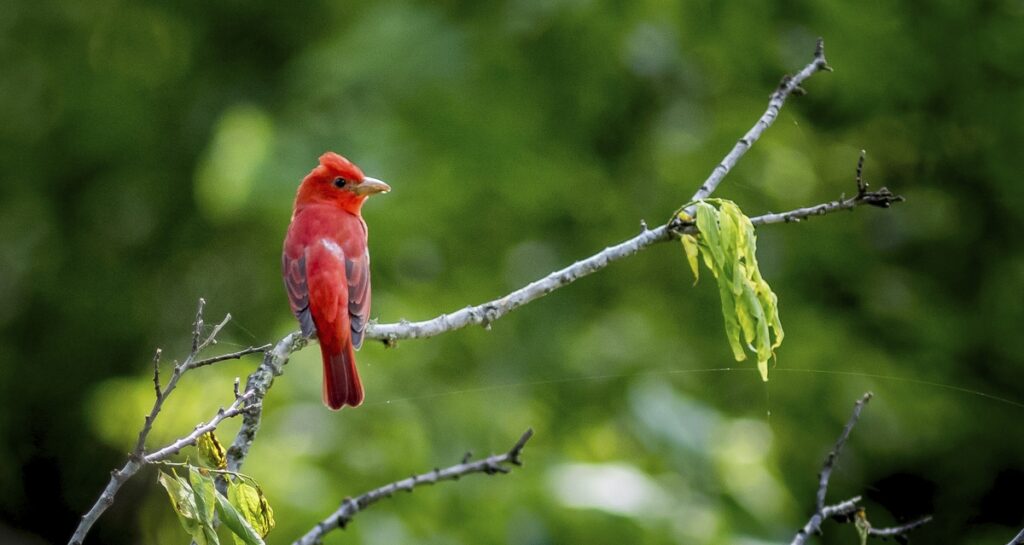
It’s Time for Spring Migration in Las Vegas!

When you look up at the night sky this May, will you search for stars or birds? The spring bird migration is here, with billions of birds flying beneath the stars on their way to breeding grounds across North America.
Some birds, like the Yellow Warbler, are only about five inches long and travel thousands of miles! Every year, these petite athletes make a pitstop in Las Vegas to refuel on their journey from Mexico and South America to Canada and Alaska.
Read on to learn more about spring bird migration in the Las Vegas Valley!
What Is The Spring Bird Migration?
May is the peak of the spring bird migration in Southern Nevada, with birds who have spent the winter catching rays in the tropics high-tailing it out to get the best breeding territory in North America, even sometimes as far as the Arctic Circle. These long-distance migrants can travel several thousand miles in just a couple of weeks. Brightly-colored males leave first to get the prime real estate to attract a mate, with females following close behind. The fitter and faster the bird, the better their chances.
But how do birds know when it’s time to migrate? After the spring equinox, the increasing daylight triggers hormonal production that cues the birds’ instinct to set up a territory, woo a mate, and make ugly-cute babies. Unlike some indecisive humans, they simply know when it’s time to go. They wait for the best weather to fly, preferring clear skies and a strong southerly wind so that they can save energy– meaning the wind blows them along northward, instead of pushing against them while they fly.
How Birds Migrate
The way that birds navigate their cross-continental trip has been one of the biggest mysteries of the natural world. Today, we know that birds can navigate by the stars and moon and that they can sense magnetic fields, though this is still a big area of research. Sensing the Earth’s magnetism helps them orient north and south like we do when we hold a compass. Young birds migrate with instinctual knowledge of how to orient, though they may not know the best route to take, so the first migratory journey of a young bird’s life is the most dangerous.
But where are the massive flocks of birds? The reason why you don’t see the sky filled with clouds of birds is that most migratory birds travel by night very high up, anywhere from 2,600-6,000 feet in altitude, according to the Cornell Lab of Ornithology.
To better visualize the clouds of birds passing through the city, the Cornell Lab and partners created BirdCast, a mapping tool that shows birds as they move across the Western Hemisphere in real-time. With BirdCast, you can see when, where, and which birds are migrating through Las Vegas from sunset to sunrise. Check out today’s BirdCast here.
(Article continues after the ad)
Please follow our fantastic site sponsors! They make content like this possible! 🙂
Migratory Songbirds in Las Vegas

May is the best month to look for the colorful gems of the bird world: golden Wilson’s Warblers (pictured on the side), ruby Summer Tanagers (below), azure Lazuli Buntings (above), and cobalt Blue Grosbeaks, to name a few. Birders have waited all year for the return of old migratory friends like warblers, vireos, grosbeaks, tanagers, buntings, and flycatchers.
If all those bird names don’t mean much to you, that’s okay. The best way to experience songbird migration is to just get out and watch them, even if you aren’t IDing. In May the city is pulsing with migratory songbirds hopping about tree canopies, searching for insects or fruit to eat. They have to stock up on calories as quickly as possible before taking to the air, so exploring any park with a lot of tree canopy is a great place to start.
Little warblers, like Wilson’s Warblers and Yellow Warblers, can be found in green-barked Palo Verde Trees, as yellow as the blooming flowers in the branches. Fruiting mulberry trees, more common in older parts of town like Paradise, are other hotspots. Find one and wait for the sunset-hued Western Tanager or Halloween-colored Black-headed Grosbeak to come to eat the fruit.
Getting out early in the morning to places like Sunset Park, Clark County Wetlands Park, or the Henderson Bird Viewing Preserve is your best chance of finding some of these spectacular migrants. If you want to drive out of the city, Corn Creek, part of the Desert National Wildlife Refuge, is a wonderful place to find migratory birds funneled into the greenspace because of the springs there. You can also explore Red Rock Audubon’s calendar for birding events around town.
#GetInMotion By Making Your Home Bird-Friendly to Migratory Birds

Migratory songbirds may be tough travelers, but they’re not invincible. The human-altered landscape poses new challenges for them on top of the distance and predators they have to avoid. But there are a few ways you can make your home safer for migratory birds.
Reduce Reflections
One way is to break up the reflection in your windows since birds don’t understand that they can’t fly through the reflection of trees and sky in the glass. CollidEscape is a tape to put up in your window to break up the reflection.
Other options for bird-safe windows include tracing your own stencils and taping them in your window or buying decorative decals at the dollar store. The important thing is that the reflection in your window is broken up with your pattern spaced two to five inches apart.
Keeps the Cats Inside
If you have cats, the best way to help migratory birds is to keep your cats indoors. According to the American Bird Conservancy, outdoor cats kill 2.7 billion birds annually and are the leading cause of human-caused bird death, including both migrant and resident birds. If keeping your cat inside is too difficult, at least keeping them inside during the morning hours is one compromise.
Provide Refreshments
Another way to help is to put water dishes out for birds to drink from. The urban desert is a harsh landscape to travel through, and a little bit of water goes a long way. Plus, this is a great way to bring birds closer to your home to enjoy. For the best effect, put a water dish half under a bush or other shelter because this makes birds feel safer from predators.
How will you help migratory birds? Go on Clark County’s BirdCast and get out to a nearby park to enjoy the wonder of spring migration before May flies by!
Like Morrigan’s articles? Read more of her work here!
Thank you to our Patreon ‘Cultivator’ supporters who help make content like this possible!
The following Patron(s) supported the production of this article: Crystal Gropp.



